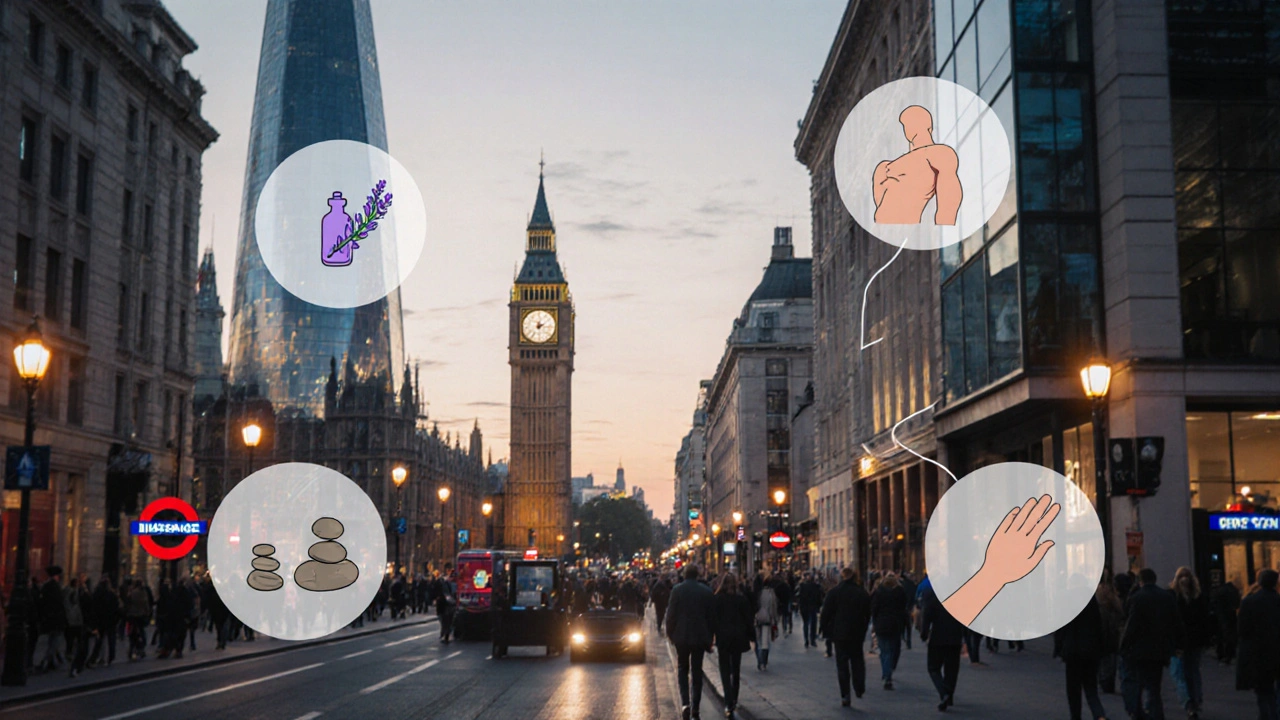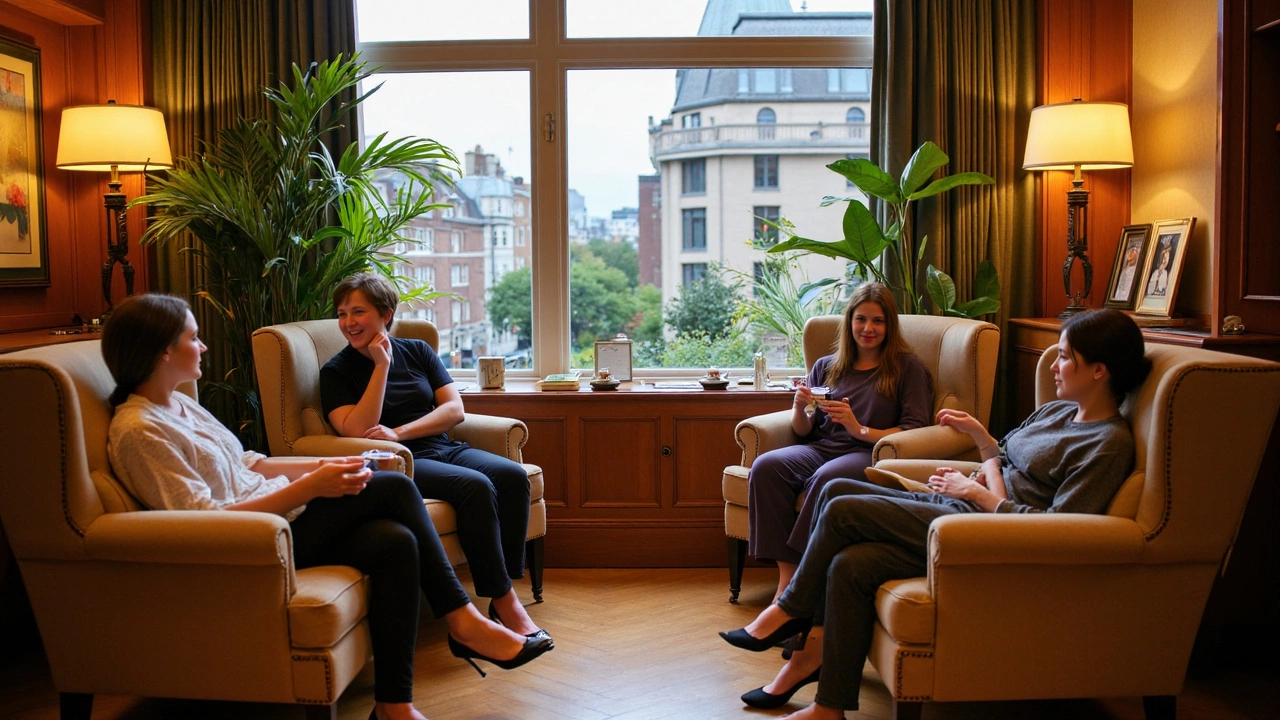Best Massage in London: Your Ultimate Relaxation Guide
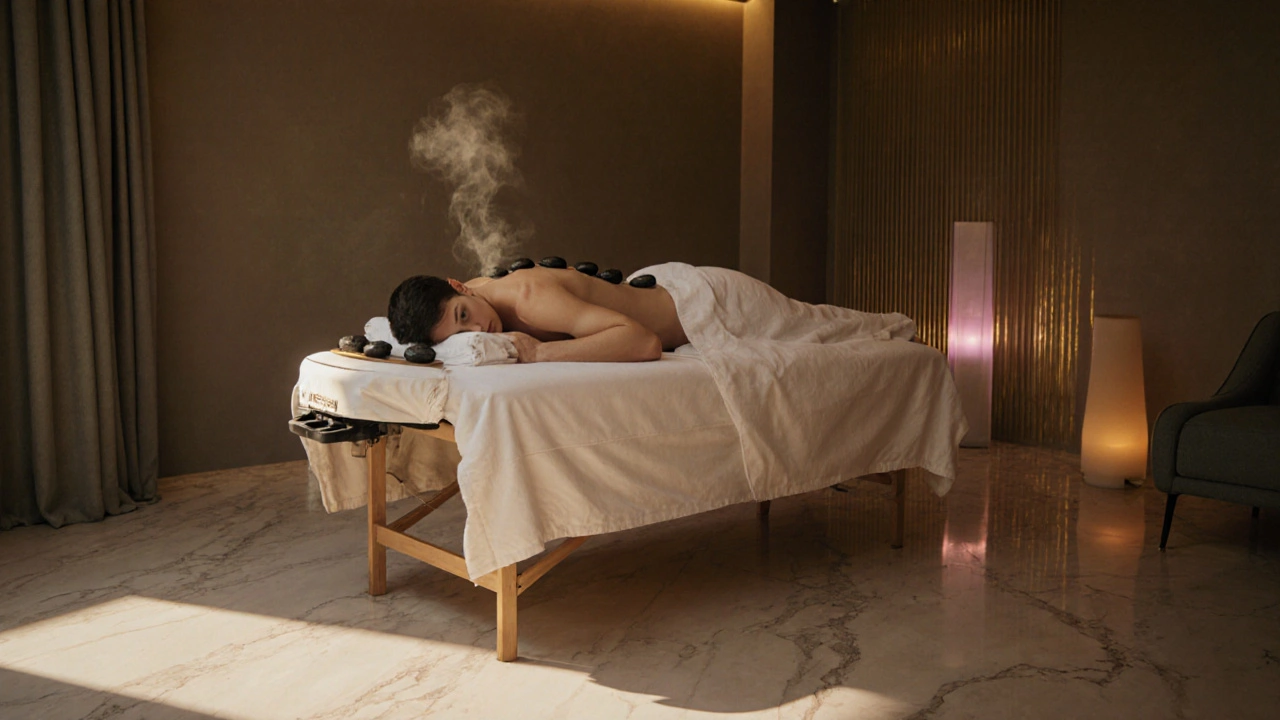
London is packed with massage places - from hidden basements in Mayfair to sleek wellness studios in Shoreditch. But if you’re looking for the best massage in London, you don’t just want a service. You want to walk out feeling like a different person. Not just relaxed - reset. That’s the difference between a good massage and the kind that sticks with you for days.
What Makes a Massage Truly Great in London?
It’s not about the price tag or the fancy candles. The best massage in London delivers three things: skilled hands, the right environment, and a clear understanding of what your body needs.
Too many places treat massage like a one-size-fits-all product. You get the same Swedish strokes whether you’re a runner with tight quads, a desk worker with a frozen neck, or someone just trying to escape the noise of the city. The top studios in London don’t do that. They start with a quick chat - not a sales pitch. They ask how you slept, where you’re holding tension, what kind of pressure feels right. Then they adjust.
Therapists at the best spots have trained for years. Not just certified - experienced. They’ve worked with athletes, new parents, people recovering from injury, and high-stress professionals. They know the difference between muscle fatigue and nerve pain. They can tell if your shoulder pain is from typing all day or if it’s linked to your breathing pattern.
The Top Types of Massage You’ll Find in London
Not all massages are created equal. The right one depends on what you’re trying to fix - or prevent.
- Swedish Massage - Gentle, flowing strokes. Ideal if you’re new to massage or just need to unwind after a long week. This is the classic ‘relaxation’ option.
- Deep Tissue Massage - Focused pressure on knots and chronic tension. Great for people with stiff necks from screen work or runners with tight hamstrings. It’s not supposed to hurt - but it should feel like a deep release.
- Hot Stone Massage - Warm basalt stones placed along your spine and muscles. The heat melts tension faster than hands alone. Perfect for winter months or anyone who feels cold easily.
- Aromatherapy Massage - Uses essential oils like lavender, eucalyptus, or bergamot. The scent isn’t just for show. Studies show lavender can lower cortisol levels. If you’re stressed, this isn’t a luxury - it’s therapy.
- Thai Massage - Done on a mat, fully clothed. The therapist uses their body to stretch and compress your muscles. It’s like yoga with a partner. If you’ve ever felt stiff after sitting on a train all day, this is your fix.
Most top studios in London offer a mix. The best ones let you combine techniques. Want deep tissue on your back with hot stones on your feet and lavender oil? That’s doable. You’re not locked into one style.
Where to Find the Best Massage in London
London has hundreds of massage providers. But only a handful consistently deliver excellence. Here’s where to look:
- Mayfair & Belgravia - These areas are home to luxury wellness retreats. Think marble floors, private changing rooms, and therapists with 10+ years of experience. Expect to pay £120-£180 for 90 minutes. Worth it if you want the full spa experience.
- Shoreditch & Hackney - More affordable, more authentic. Studios here focus on results, not decor. Therapists often come from physiotherapy or sports backgrounds. You’ll pay £70-£100 and get the same level of skill.
- King’s Cross & Camden - Quiet, no-frills spots that serve locals. Many are run by therapists who’ve been practicing for over a decade. These places don’t advertise on Instagram. You find them through word of mouth.
- Outcall Services - If you’re too tired to leave home, some top therapists offer house calls. They bring everything: oil, towels, heated tables. Prices start around £90. Good for new parents, people with mobility issues, or anyone who just wants to stay in their PJs.
Don’t assume the most expensive place is the best. One client told me she paid £150 at a luxury clinic in Mayfair - and left feeling worse. Two weeks later, she went to a small studio in Peckham for £75. Her neck pain vanished. The therapist noticed she’d been sleeping on her stomach and showed her how to adjust. That’s the kind of attention that matters.
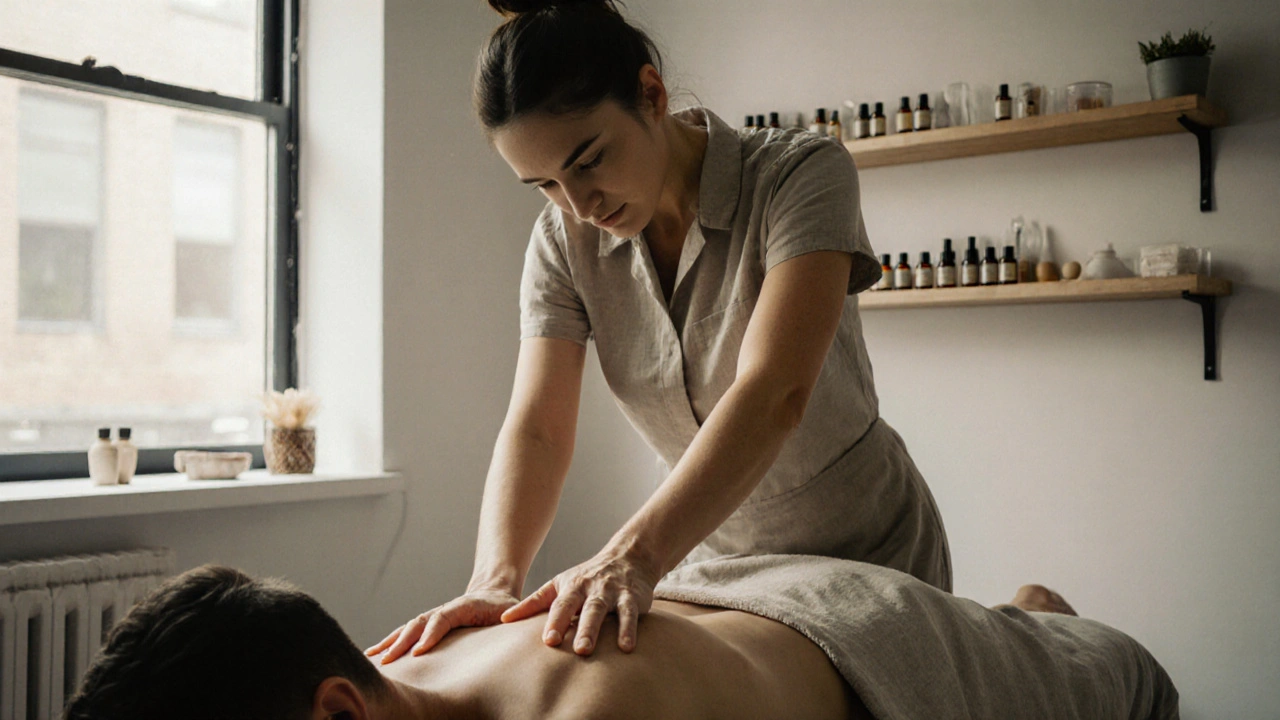
How to Choose the Right Therapist
Not all massage therapists are the same. Here’s how to pick the right one:
- Check their qualifications. Look for levels 3 or 4 in massage therapy from accredited schools like VTCT or ITEC. Avoid places that only say ‘certified’ without specifics.
- Read reviews - but not the glowing ones. Look for reviews that mention specific issues: ‘fixed my sciatica’, ‘helped with postnatal back pain’, ‘knew exactly where to press’.
- Ask about their experience. A good therapist will tell you how many clients they’ve worked with, what kinds of conditions they handle, and how long they’ve been practicing.
- Book a 60-minute session first. Don’t jump into 90 minutes. See how you feel afterward. If you’re sore for two days, they went too hard. If you feel nothing, they didn’t go deep enough.
Trust your body. If a therapist pushes you into a stretch that hurts - say no. Massage should feel like a release, not a battle.
What to Expect During Your First Visit
Walking into a massage studio for the first time can feel awkward. Here’s what actually happens:
- You’ll fill out a short form - medical history, injuries, allergies. This isn’t bureaucracy. It’s safety.
- The therapist will ask you 3-5 questions: ‘Where do you feel tightest?’ ‘Do you have any pain?’ ‘What’s your goal today?’
- You’ll be shown to a private room. You undress to your comfort level. Most people keep underwear on. You’ll be covered with towels the whole time.
- The therapist leaves the room while you get on the table. They knock before coming back in.
- They’ll start with light pressure, then adjust based on your feedback. You can talk during the session. Say ‘softer’, ‘deeper’, ‘that spot’, ‘stop’ - no judgment.
- Afterward, you’ll get water and maybe a herbal tea. They might suggest stretches or a self-massage technique.
Don’t rush out. Sit quietly for five minutes. Let your body settle. The effects of a good massage don’t hit right away. They build over the next 24-48 hours.
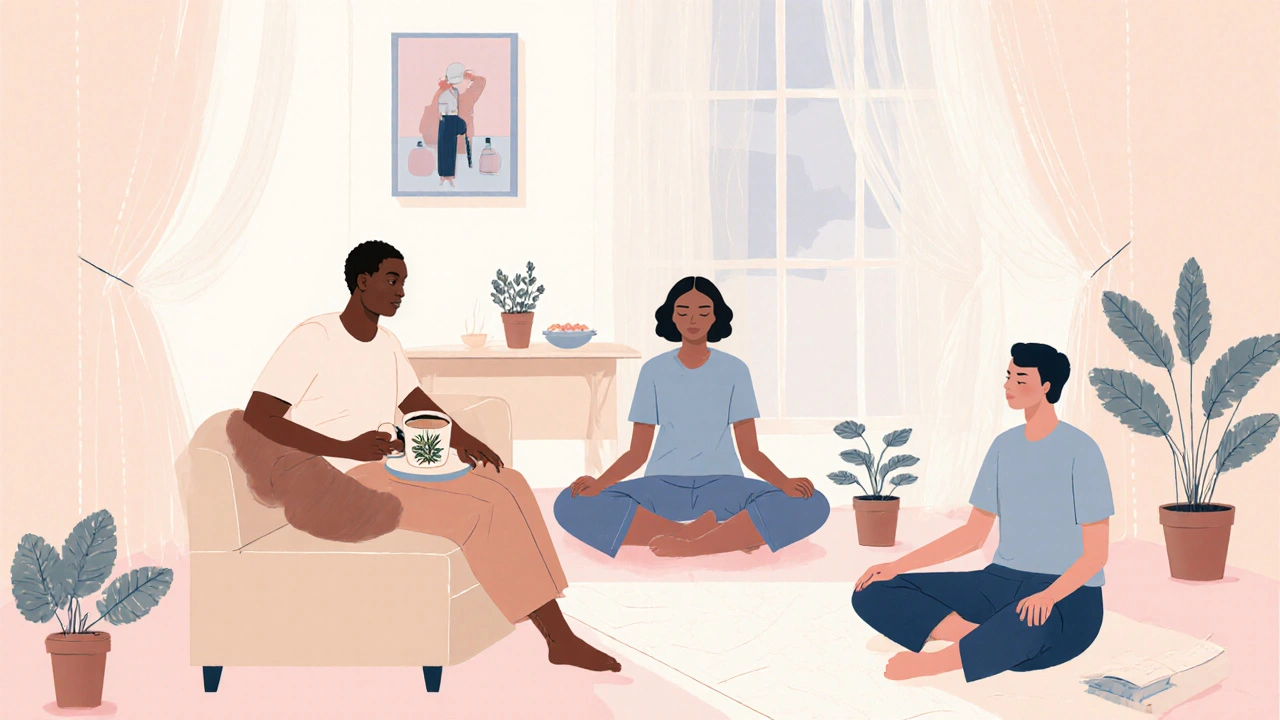
How Often Should You Get a Massage?
There’s no magic number. But here’s what works for most people in London:
- If you’re under constant stress - once every 2-3 weeks.
- If you’re active (running, gym, dancing) - once a month to prevent injury.
- If you have chronic pain or tightness - weekly for 4-6 weeks, then cut back.
- If you just want to chill - once every 6-8 weeks. Treat it like a mental health appointment.
Think of massage like brushing your teeth. You don’t wait until your gums bleed. You do it regularly to stay healthy.
Red Flags to Avoid
Not every massage place is legit. Watch out for:
- Staff who push packages on you before the session - ‘Buy 5, get 1 free’ - that’s a sign they care more about sales than your health.
- No clear pricing on their website. If you have to call to find out the cost, walk away.
- Therapists who don’t ask questions. If they just start rubbing without checking in, they’re not paying attention.
- Dirty towels, strong chemical smells, or noisy rooms. These aren’t minor details. They show a lack of care.
- Therapists who promise to ‘cure’ your pain. Massage helps - it doesn’t fix broken bones or herniated discs.
Good massage is subtle. It doesn’t promise miracles. It just gives your body the space to heal itself.
Why This Matters More Than You Think
London is fast. We run from meeting to meeting, train to train, screen to screen. We forget our bodies are still there - aching, holding tension, screaming for rest.
The best massage in London isn’t about luxury. It’s about survival. It’s the 90 minutes you give yourself to breathe, to be touched gently, to let go. It’s not selfish. It’s necessary.
People who get regular massage report better sleep, less anxiety, fewer headaches, and more energy. They’re not just relaxed. They’re more present. At work. With their families. With themselves.
If you’ve been putting it off - stop. Book a session. Pick a studio that feels right. Let someone else take care of your body for once.
You don’t need to spend a fortune. You just need to show up.
What’s the average cost of a massage in London?
A 60-minute massage in London typically costs between £70 and £120. Luxury studios in Mayfair or Knightsbridge may charge £150 or more. Outcall services start around £90. Budget-friendly options in areas like Peckham, Hackney, or Croydon offer quality sessions for £60-£75.
Is deep tissue massage painful?
It shouldn’t be painful - but it can be intense. Deep tissue targets chronic muscle knots and adhesions. You might feel pressure or a burning sensation, but sharp pain means the therapist is going too hard. Always speak up. Good therapists adjust on the spot. If you’re left bruised or sore for days, they overdid it.
Can I get a massage if I’m pregnant?
Yes - but only with a therapist trained in prenatal massage. Avoid deep pressure on the abdomen and inner thighs. Many studios in London offer specialized prenatal sessions. Always tell your therapist you’re pregnant before they start.
How long should a massage session last?
For first-timers, 60 minutes is ideal. It’s long enough to work on major areas without feeling rushed. If you have specific problem areas - like chronic lower back pain - go for 90 minutes. Anything longer than 90 minutes often feels draining rather than relaxing.
Do I need to undress completely?
No. You undress to your comfort level. Most people keep their underwear on. The therapist will cover you with towels, exposing only the area being worked on. If you’re uncomfortable, say so. A good therapist will respect your boundaries without judgment.
Can massage help with anxiety?
Yes. Massage lowers cortisol (the stress hormone) and increases serotonin and dopamine. Aromatherapy with lavender or chamomile oil can enhance this effect. Many clients report feeling calmer, sleeping better, and thinking more clearly after regular sessions. It’s not a replacement for therapy - but it’s a powerful support tool.
What’s the difference between Swedish and deep tissue massage?
Swedish massage uses long, flowing strokes to promote relaxation and improve circulation. It’s gentle and rhythmic. Deep tissue uses slower, focused pressure to reach deeper layers of muscle and connective tissue. It’s for chronic tension, not relaxation. You can combine both - many top therapists offer a hybrid session.
Are there any side effects after a massage?
Some people feel slightly sore, tired, or need to urinate more after a deep massage. That’s normal - your body is releasing toxins and adjusting. Drink water. Rest. If you feel dizzy, nauseous, or have sharp pain, contact your therapist. These are rare but possible signs of overwork or an underlying issue.
Next time you’re feeling drained, don’t reach for another coffee. Book a massage. Your body will thank you.


